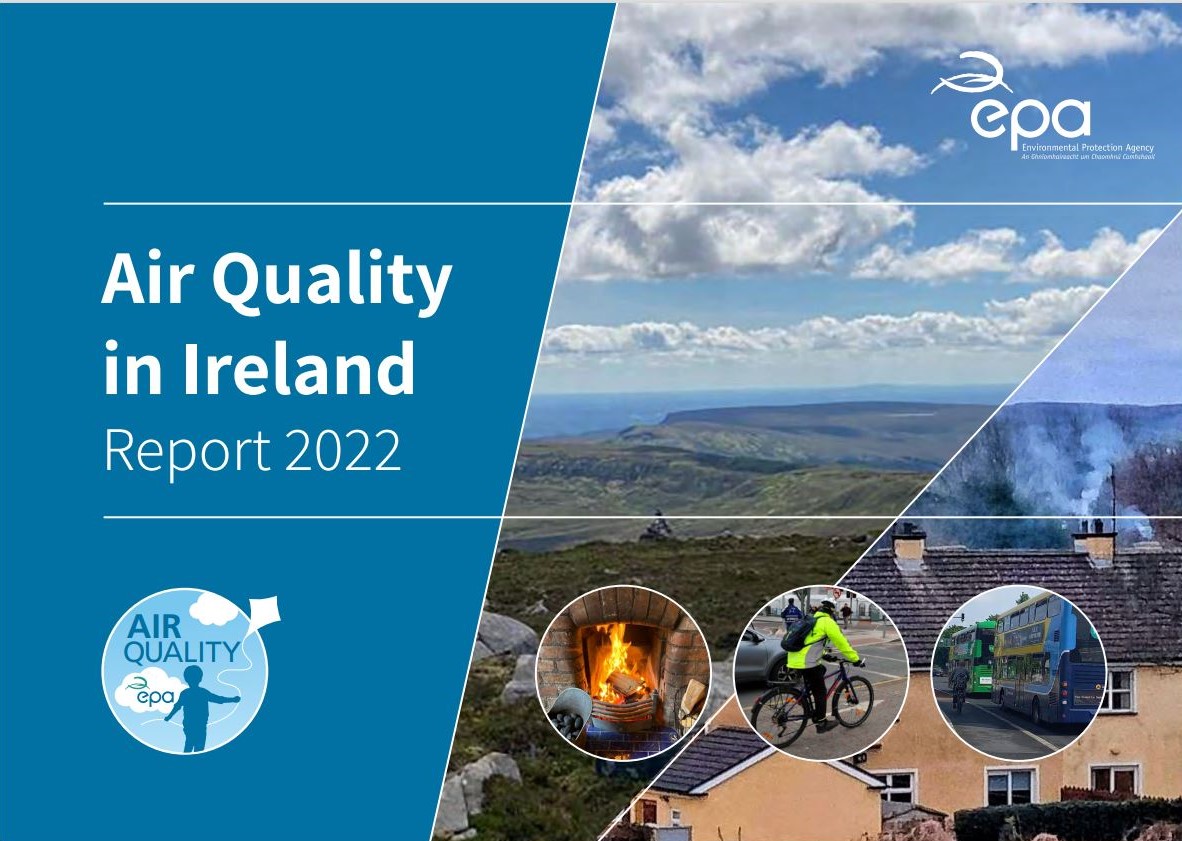Air quality in Ireland 2022
Summary: Air quality in Ireland is generally good, however, there are concerning localised issues that are impacting negatively on the air we breathe. Ireland met all of its EU legal requirements in 2022, but it did not meet the new health-based WHO guidelines in 2022. Ireland and Europe should move towards achieving the health-based WHO air quality guidelines.

Air Quality in Ireland Report 2022 (printable pdf)
Summary Tables 2022
CERC Air Quality Modelling Report CERC Ireland 2018 - 2019
Annual Air Quality Bulletin 2022
View the report in digital format
Ireland’s ambition to move towards the health-based WHO air quality guidelines will be challenging but will have a significantly positive impact on health
- Air quality in Ireland is generally good, however, there are concerning localised issues.
- Ireland met all of its EU legal requirements in 2022, but it did not meet the more stringent health-based World Health Organisation (WHO) Air Quality guidelines.
- It is estimated that there are approximately 1,300 premature deaths annually in Ireland due to poor air quality from fine particulate matter (PM2.5).
- The choices we make in how we heat our homes and how we travel directly impact the quality of the air we breathe.
The report shows that, while air quality in Ireland is generally good and compares favourably with many of our European neighbours, there are concerning localised issues which lead to poor air quality. Ireland met EU legal air quality limits in 2022, however it did not meet the more stringent health-based World Health Organization (WHO) air quality guidelines for a number of pollutants including: particulate matter (PM), nitrogen Dioxide (N02), sulphur dioxide (SO2) and ozone (O3) due mainly to the burning of solid fuel in our towns and villages and traffic in our cities.
Poor air quality has a proven negative impact on people’s health. There are an estimated 1,300 premature deaths in Ireland per year due to particulate matter in our air. In 2022 air monitoring results from EPA stations across Ireland show that fine particulate matter (PM2.5), mainly from burning solid fuel in our homes, and nitrogen dioxide (NO2) mainly from road traffic, remain the main threats to good air quality. High levels of these pollutants are often associated with cold, still weather from late autumn through to early spring, when generally short-term incidents of poor air quality occur.
The report identifies that using less solid fuel and cleaner fuels to heat our homes and reducing our use of cars to go to school, work and play are actions that will contribute towards achieving the WHO guidelines. The report further identifies the critical role for local authorities in enforcement, implementation of existing plans and investment in infrastructure to encourage cleaner and healthier air quality choices:
- Local authorities must provide more resources to increase air enforcement activities and implement the new solid fuel regulations.
- Dublin local authorities must fully implement the Dublin Region Air Quality Plan 2021 to improve Nitrogen Dioxide levels in Dublin Region.
- Investment in clean public transport infrastructure across the country must be maintained and increased.
- More safe footpaths and cycle lanes must be created to continue to increase active travel as a viable and safe alternative to car use and associated nitrogen dioxide emissions.